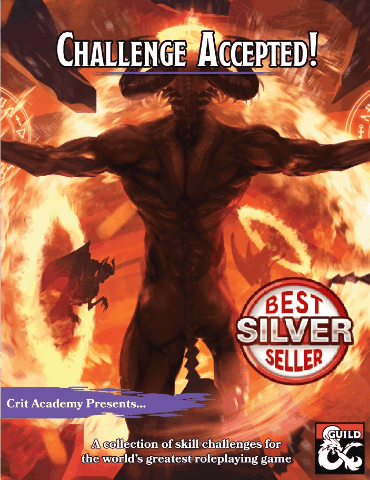10 Ways to Make Traps More Fun in Dungeons & Dragons!
- Justin Handlin

- Aug 16, 2021
- 4 min read
Updated: Aug 21, 2021

Do you want to be a better D&D Player? Do you want to become an amazing Dungeon Master? Then subscribe to our YouTube to get notified when we publish new D&D Tips and Tricks videos
10 Ways to Make Traps Fun and Engaging in your Dungeons & Dragons Game!
Building traps in Dungeons & Dragons can be such a fun and rewarding experience. Whether it’s the expression on a player’s face when their character succumbs to a trapped golden idol on a pedestal or when they successfully solve a complex puzzle to disable the fire-breathing statue Regardless of the fun to be had, if the Dungeon master doesn’t design the trap correctly, then it may not be fun at all. Below are 10 tips on how to make traps more fun for both the DM and the Players.
10. Reward the Characters with Treasure.
A great many adventurers have met the end of sweeping scythe blade traps. So it would be safe to assume that their equipment didn’t make it too far. When the characters encounter a trap, perhaps the remains of victims of the crushing ceiling or wall are still in the trap, along with their backpack, belt pouch, and weapons.
9. Reveal Details of the World.
When characters delve into lost mines or ancient tombs, they aren’t just random buildings. They are chock full of details and lore regarding the world when it was built or used. When the characters release a rolling sphere trap or perhaps falling boulders reveal an ancient glyph that points to the true deity of the ancient temple.

8. Have an Encounter with the Trap Maker.
If the characters are willing to take a bit of initiative and research who forged the traps that are said to protect the dwarven tomb, the characters meet/interrogate the creator of the trap(s). This could allow them to gain information and insight into traps they may run into later. Depending on the method or motives of the trap maker, the sharing of false information could be a thing too.
7. Give an Adventure Tip.
When an iron portcullis drops down to seal, the character in the room full of pendulum blades has a carved representation of the dungeon complex in the pattern of its iron bars. It’s a hand-carved map in the blades. Extra points if there is a note written in thieves cant to go alongside it with a warning of things to come.
6. Give the Players Something to Learn.
Tying the traps into a theme of the dungeon can teach them about potential hazards or threats further into the dungeon. For example, if removing the red gem sets off the statue’s trap, stepping on a red mosaic in the floor sounds an alarm, and pulling the red-handed lever made the bridge turn sideways, the characters might think twice about opening that giant red door.
5. Reveal a New Section of a Dungeon.
When your characters trip and fall into a trap such as a spiked pit. Give that spiked pit a secret access tunnel to the dungeon or a secret lair so that bodies and valuables can be retrieved without a risky climb into the pit itself. This can be a fantastic reward for the character who clumsily falls into such a simple trap.
4. Team it Up with Other Traps.
Combining traps is one of the easiest ways to make traps interesting. Characters dashing down a long hallway as they are chased by a rolling sphere becomes far more interesting when that hallway is full of poison needle dart holes or dangerous saws that pop out of the side walls or up out of the floor.

3. Give Player Characters Control.
Traps are often designed to be easily reset. Let the characters take advantage of this by letting them reset traps and allow them to lure their foes into the trap. You can take it a step further by letting them jury-rig the trap to go off when it is supposed to be safe to pass.
2. Provide Ways for Every Character to Contribute.
While it's cool that the rogue can always spot a secret control panel or something similar related to a deadly trap. Consider maybe hiding it behind an illusionary wall so that the spellcasters detect magic or arcana skills can aid in discovering a way to disable the trap.
Perhaps the group’s barbarian can try to hold the dropping ceiling open with strength checks long enough for the group to pass.
1. Combine it with Combat!
Traps don't have to only be guardians of a room of loot or dungeon entrance. Adding a spiked pit trap to a room full of brutish orcs becomes far more interesting when the monsters are constantly trying to shove the characters down into it, or vice versa.
Having a fight on a set of stairs that turns into a slippery ramp with a pit with a gelatinous cube in it can be an interesting and sticky situation.
These are just a few ways to build fun and engaging traps in your Dungeons & Dragons games. By a few or all of these features to your traps will make for a memorable D&D encounter.
Sign Up for our newsletter to get a FREE copy of our best-selling D&D Supplement: Challenge Accepted. You will also be entered to win our weekly RPG PhatLoot Giveaways!
Make sure to subscribe to our newsletter so we can help you on your future adventures. Newsletter subscribers are also entered to win cool prizes each and every week. Check out our fellowship members for more great content. Visit our Youtube channel for our show episodes, actual play episodes, and our tips & tricks videos. Support us on Patreon to get weekly Dungeons and Dragons loot!
*Crit Academy is an Affiliate of Amazon, DMsguild and DriveThruRPG*






















Comments